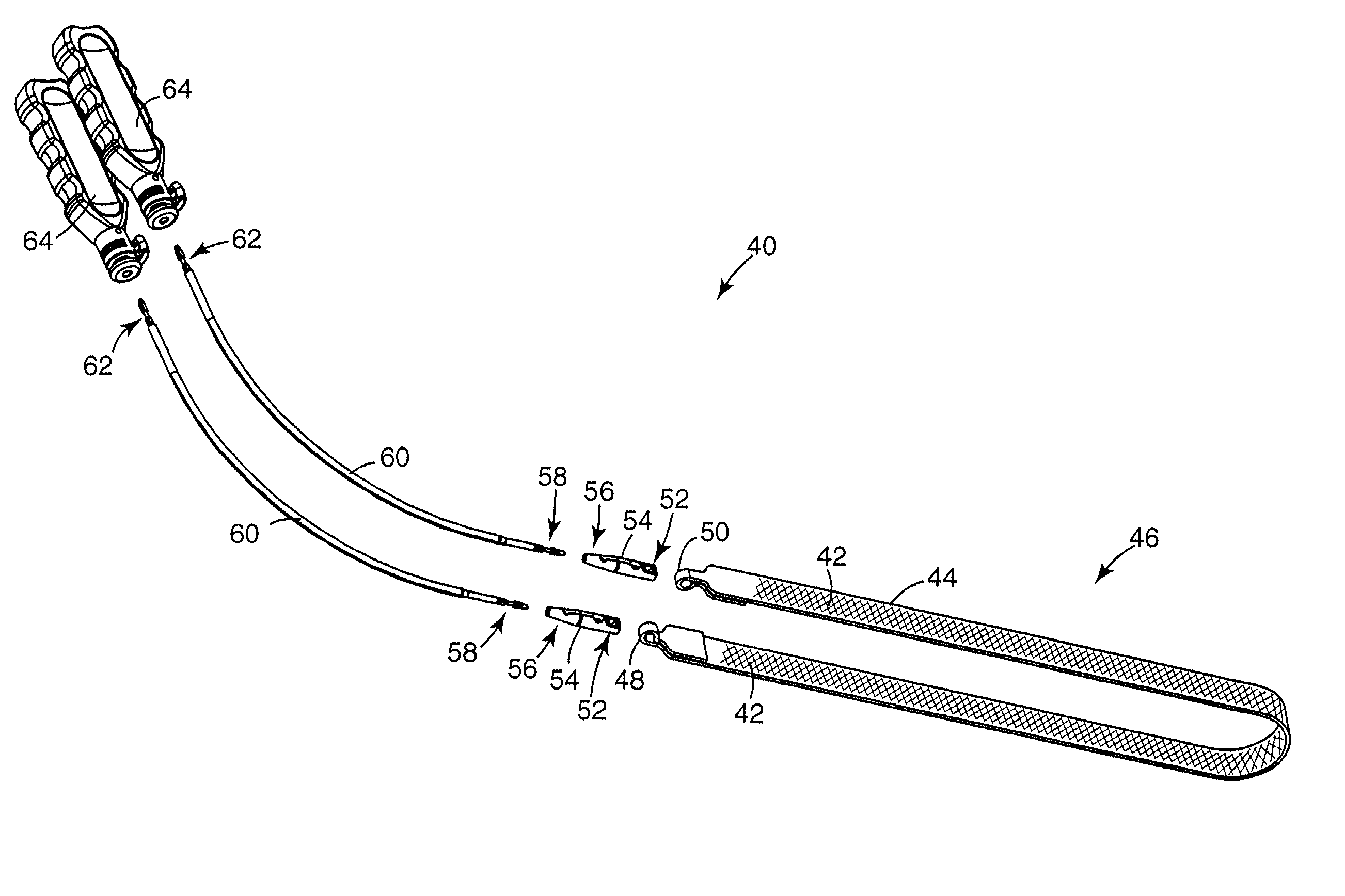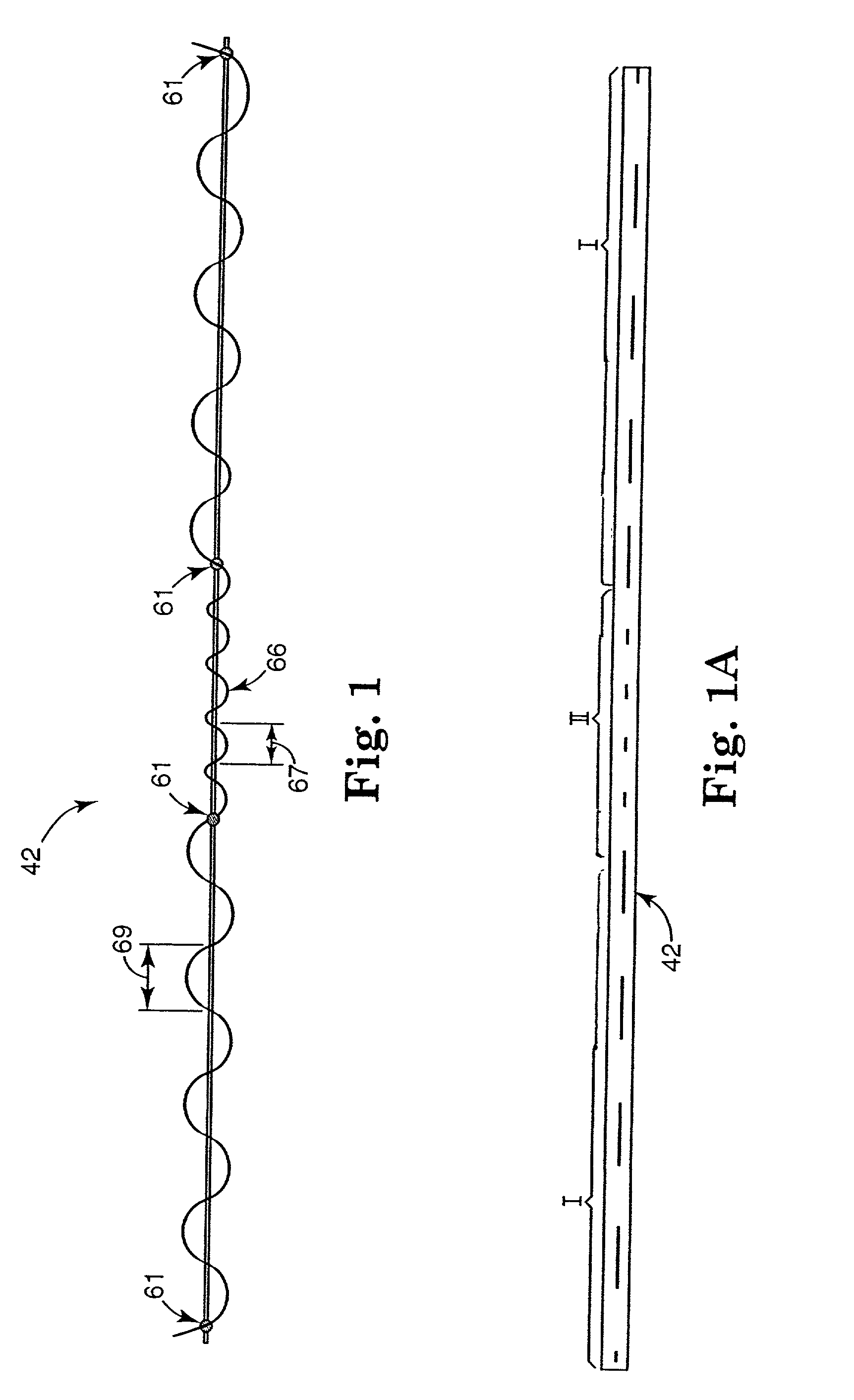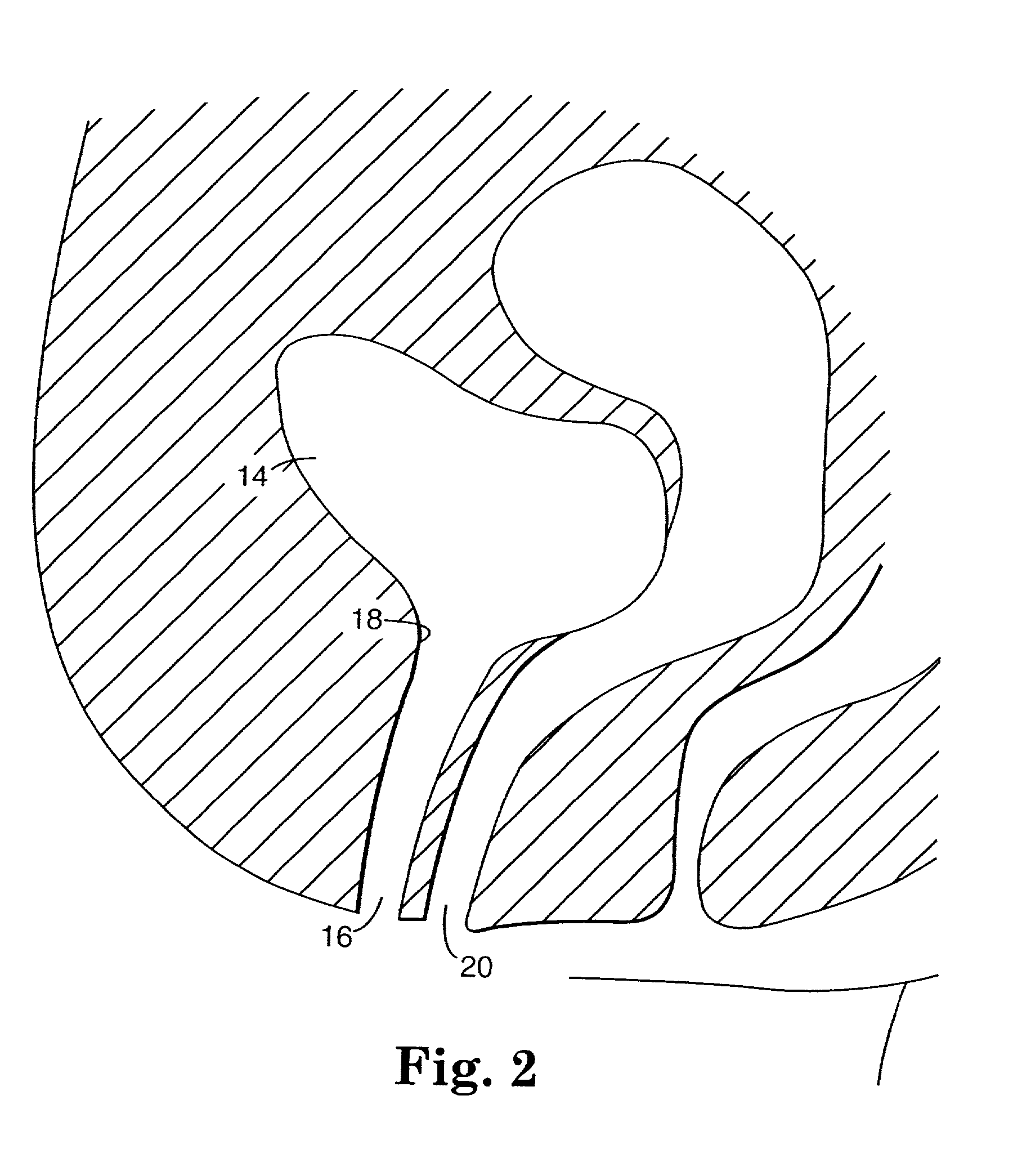Implantable article and method
a technology of implantable articles and articles, applied in the field of implantable articles and, can solve the problems of incontinence type, functional incontinence, and difficulty in moving from one place to another, and achieve the effect of avoiding permanent deformation of the sling and adversely affecting the therapeutic effect of the sling
- Summary
- Abstract
- Description
- Claims
- Application Information
AI Technical Summary
Benefits of technology
Problems solved by technology
Method used
Image
Examples
Embodiment Construction
OF METHODS
[0215] Many methods are contemplated herein. Although the methods of use as disclosed herein generally relate to female incontinence conditions and treatments / procedures, male incontinence conditions and treatments / procedures are also included within the scope of the present invention. Procedures that address problems other than incontinence (e.g. cystocele, enterocele or prolapse) are also contemplated alone or in conjunction with the present invention. Further, the term "urethra," with respect to sling positioning, is used for brevity and reader convenience. It should be noted that the present invention is particularly suitable for placing a sling in a therapeutically effective position. The method may be utilized to support a variety of structures at different anatomical locations. As such, the terms "target site," "bladder", "urethro-vesical juncture", "vaginal vault", "U-V juncture" and "bladder neck" are also included within the scope of the present invention.
[0216] ...
PUM
 Login to View More
Login to View More Abstract
Description
Claims
Application Information
 Login to View More
Login to View More - R&D
- Intellectual Property
- Life Sciences
- Materials
- Tech Scout
- Unparalleled Data Quality
- Higher Quality Content
- 60% Fewer Hallucinations
Browse by: Latest US Patents, China's latest patents, Technical Efficacy Thesaurus, Application Domain, Technology Topic, Popular Technical Reports.
© 2025 PatSnap. All rights reserved.Legal|Privacy policy|Modern Slavery Act Transparency Statement|Sitemap|About US| Contact US: help@patsnap.com



